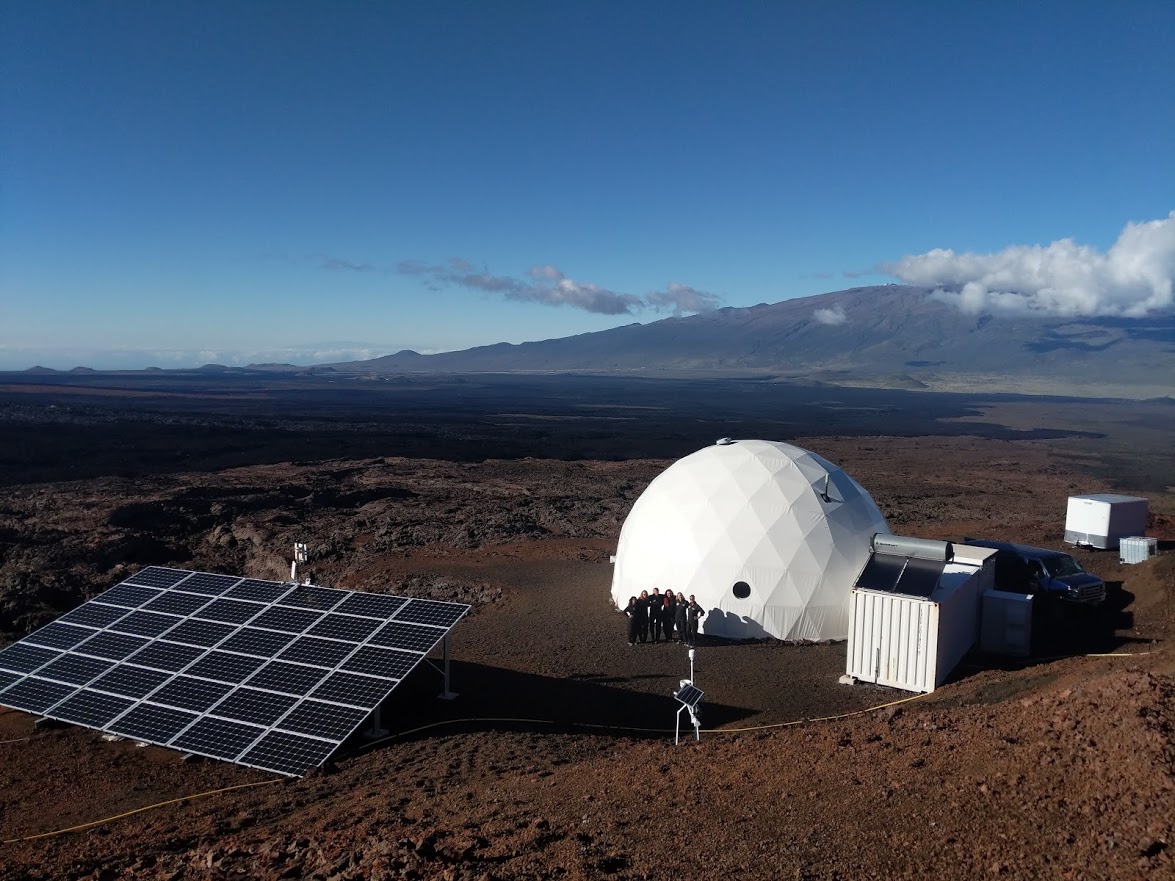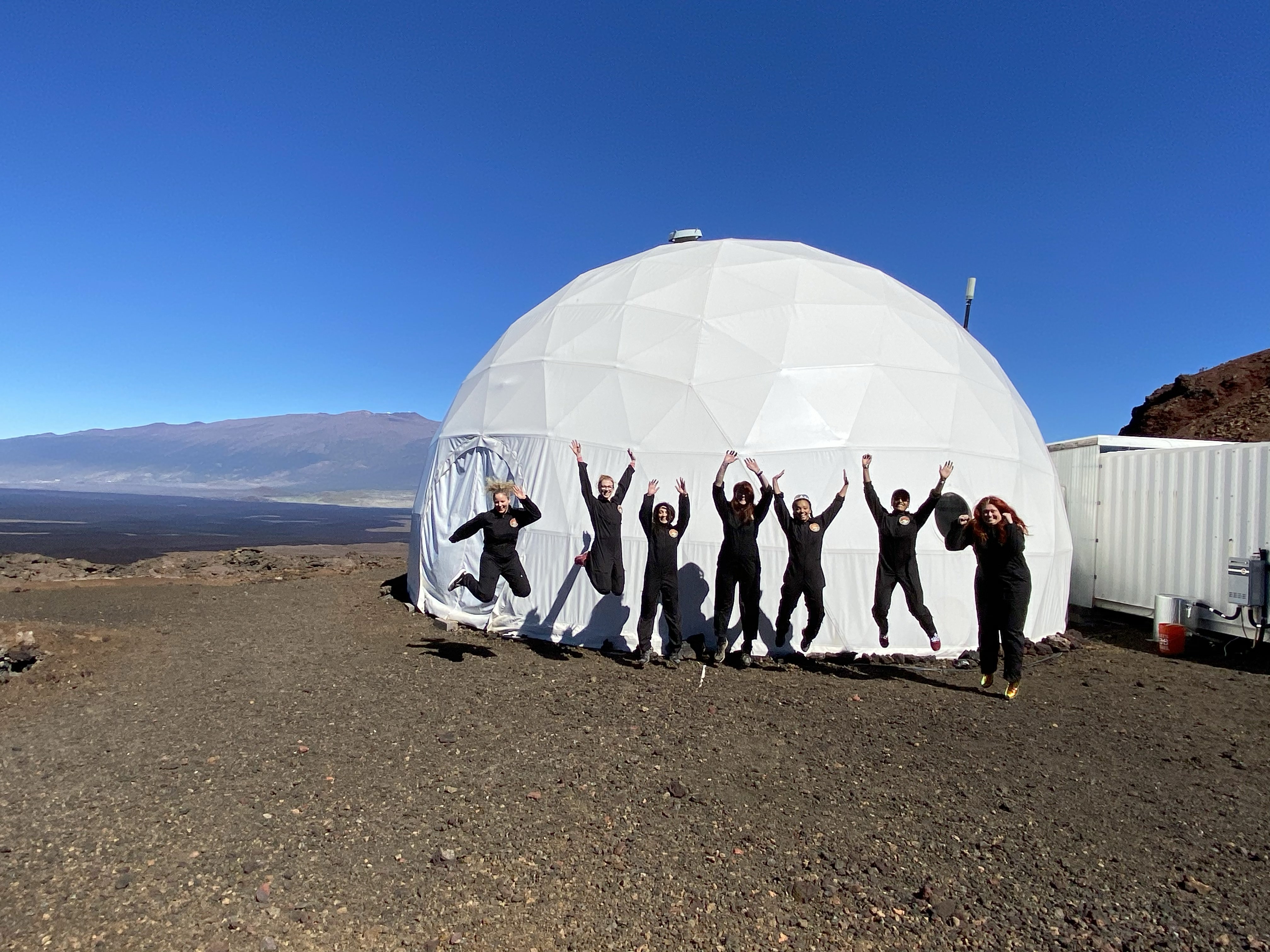An all-woman Mars analog crew just 'returned to Earth' in Hawaii
KONA, Hawaii — An all-female crew of analog astronauts have "returned to Earth," completing a two-week mission in a mock Mars habitat on the big island of Hawaii.
Six scientists entered the HI-SEAS habitat (the name is short for Hawaii Space Exploration Analog and Simulation) — an analog Mars base for human researchers that sits on a remote slope of the Mauna Loa volcano — on Jan. 4. On Saturday (Jan. 18), at about 4 p.m. local time (9 p.m. EST/0200 GMT ), they emerged from the habitat through an airlock, completing the simulation.
This mission, known as Sensoria I, is the first all-female mission at HI-SEAS and the first mission to take place as part of the Sensoria project, a larger initiative that will include a series of missions that will be female-led and female-majority, J.J. Hastings, a bioengineer, the commander of Sensoria I and the CEO of Analogs LLC, a company that is backing the project, told Space.com.
"While future Sensoria missions will welcome male researchers as well, we believe that women need to be placed at the center of our shared vision for space exploration, that women need to be given a platform for professional development, opportunities for research and training," Hastings told Space.com as the mission began.
While a first for HI-SEAS, the mission is not the first all-woman Mars analog mission. That title belongs the Mars Society's Mars Desert Research Station in Utah in 2005 and 2006.
Related: Life on Mars: Inside The HI-SEAS Isolation Habitat (Gallery)

Leaving "Mars"
Exiting the HI-SEAS habitat after two weeks on "Mars," was "a bit surreal, actually," Hastings told Space.com after completing the mission. “Though we'd barely gone 100 kilometers away from where we are right now, it feels like a completely different world."
Get the Space.com Newsletter
Breaking space news, the latest updates on rocket launches, skywatching events and more!
The successful completion of the first Sensoria mission will help inform the future of the program and future Sensoria missions, Hastings said.
"What I find extraordinary is, as opposed to maybe a group of individuals who come in to endure two weeks together and move on, we've grown that much closer, which to me gives strength to the rationale behind the Sensoria program to really bring incredibly talented, intelligent, extraordinary professionals in the space sector together to form even grander plans together," she added.
A main aim of the program is to connect and uplift women in the space sector to create and support their professional development. As Hastings explained to Space.com, the mission wasn’t just an opportunity for these six researchers to accomplish important research tasks, it also enabled them to connect and "leave with grander visions of how to work together and really transform the space sector."
Related: One-Year Mock Mars Crew 'Returns to Earth': HI-SEAS Photos

"Martian research"
For the past two weeks, these six researchers (Hastings, Erin Bonilla, Adriana Blachowicz, Makiah Eustice, Sian Proctor and Maraia Hoffman) have been swabbing “Martian” surfaces and performing genetic sequencing on-site, fermenting foods, exploring new technologies, illustrating, developing new non-verbal methods of communication, working on sustainable hydrogels, exploring what critical self-reflection means in a space analog environment and so much more.
The six researchers come from a variety of backgrounds. They both brought a wide range of different research projects and investigations into the lab and worked together on each other’s studies, helping each other to swab different surfaces, test out "Martian foods" and more.
Sensoria in the future
The Sensoria project, in addition to explicitly including and supporting women with these analog missions, also aims to include and lift up young women through educational programs and collaborations.
Sensoria has partnered with Sally Ride Science, an education nonprofit that works to support young women in science, and a group of undergraduate women who communicated with the Sensoria I crew from the commercial space company Blue Origin.
Immediately following the Sensoria I crew's exit from the habitat, a new crew of researchers from the European Space Agency entered the habitat for a new analog mission.
CORRECTION: An earlier version of this story incorrectly stated that the Sensoria HI-SEAS mission was the first all-woman Mars analog mission. It is the first all-female mission by the HI-SEAS program. The first all-female mock Mars missions were performed by the Mars Society's Mars Desert Research Station in Utah in 2005 and 2006.
- The 9 Coolest Mock Space Missions
- One-Year Mock Mars Crew 'Returns to Earth': HI-SEAS Photos
- Mars500: Photos From Russia's Mock Mars Mission
Follow Chelsea Gohd on Twitter @chelsea_gohd. Follow us on Twitter @Spacedotcom and on Facebook.

Join our Space Forums to keep talking space on the latest missions, night sky and more! And if you have a news tip, correction or comment, let us know at: community@space.com.

Chelsea “Foxanne” Gohd joined Space.com in 2018 and is now a Senior Writer, writing about everything from climate change to planetary science and human spaceflight in both articles and on-camera in videos. With a degree in Public Health and biological sciences, Chelsea has written and worked for institutions including the American Museum of Natural History, Scientific American, Discover Magazine Blog, Astronomy Magazine and Live Science. When not writing, editing or filming something space-y, Chelsea "Foxanne" Gohd is writing music and performing as Foxanne, even launching a song to space in 2021 with Inspiration4. You can follow her on Twitter @chelsea_gohd and @foxannemusic.









